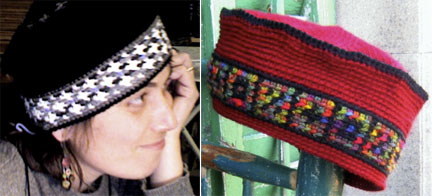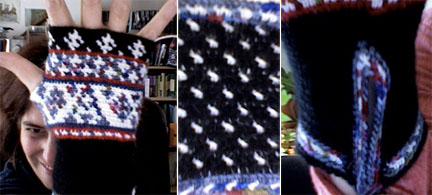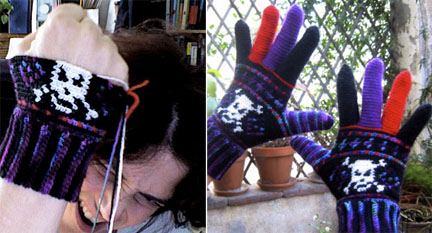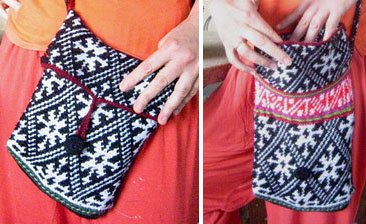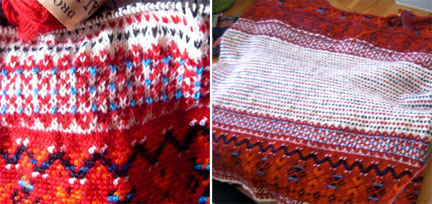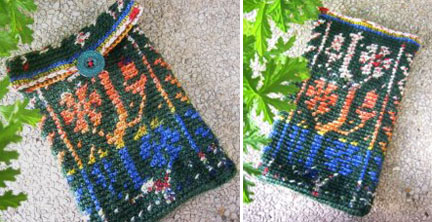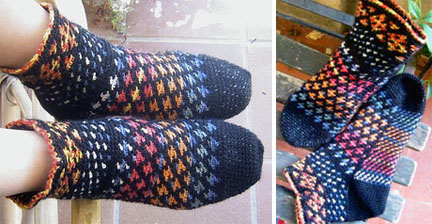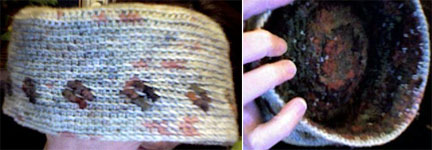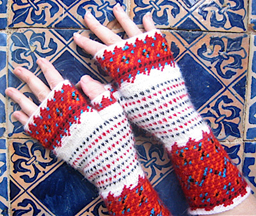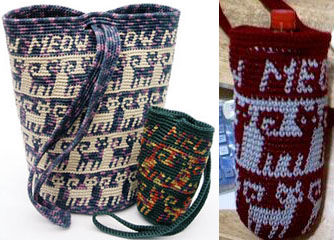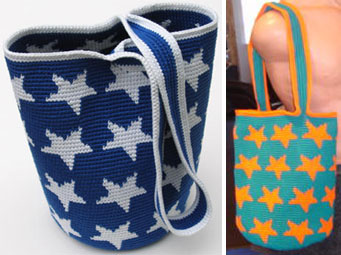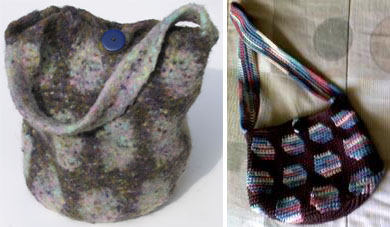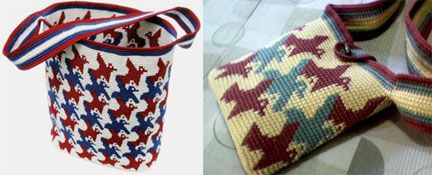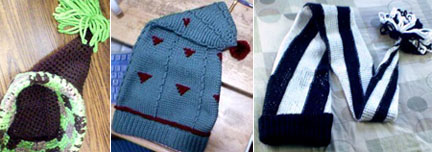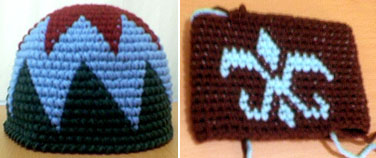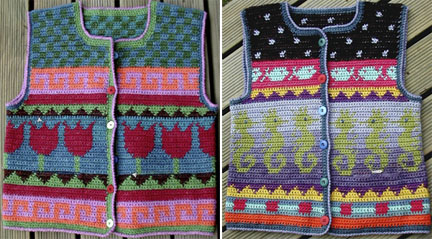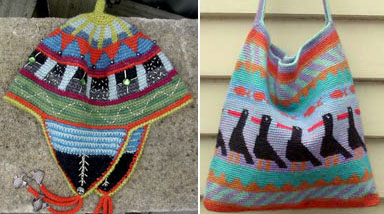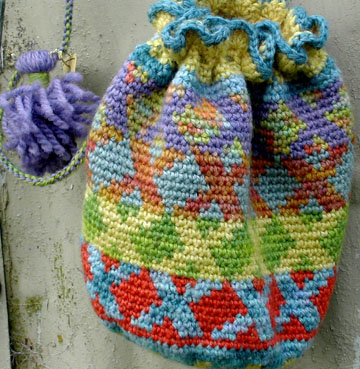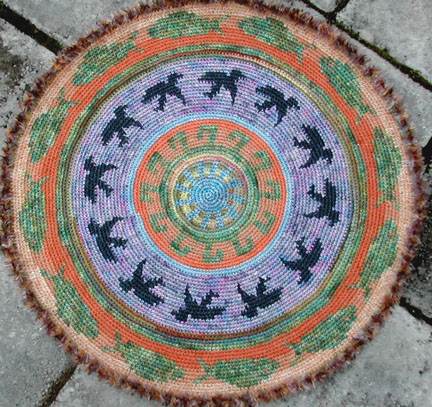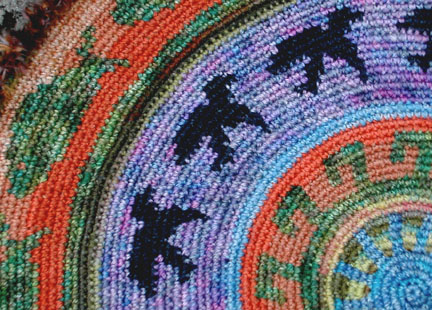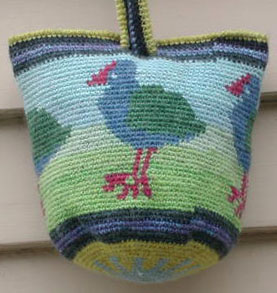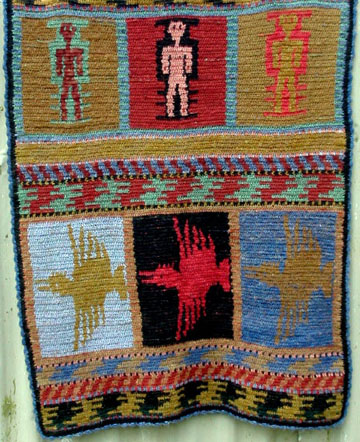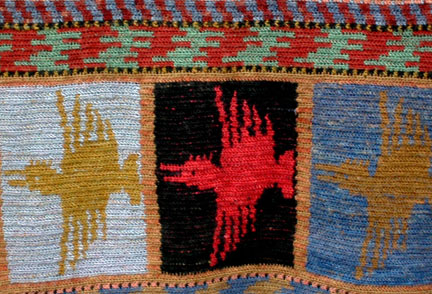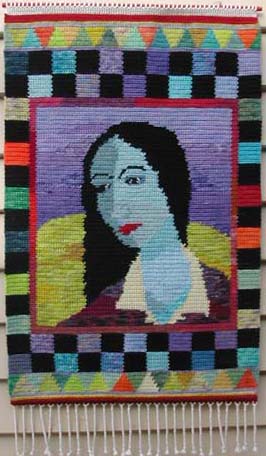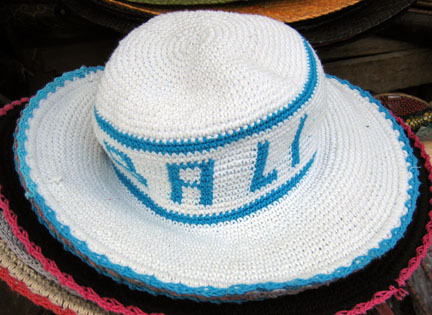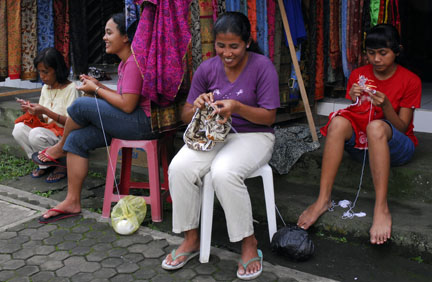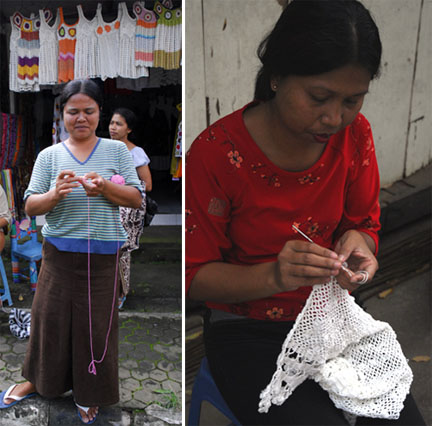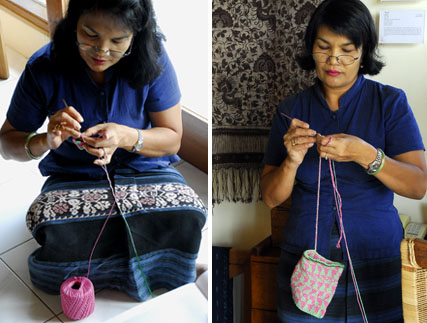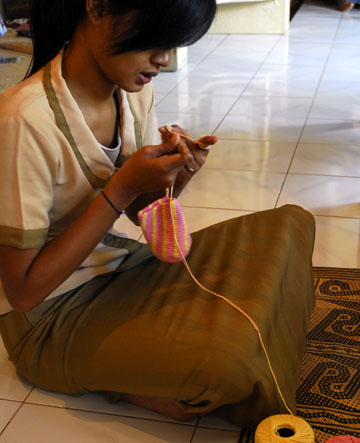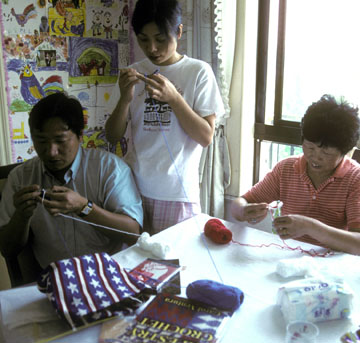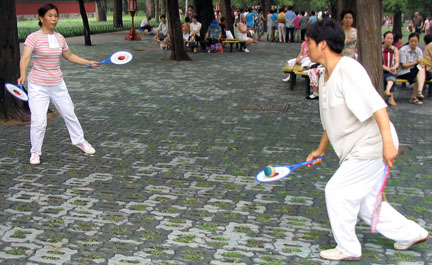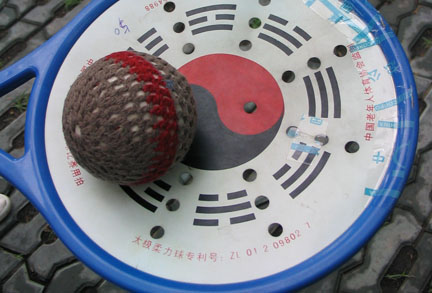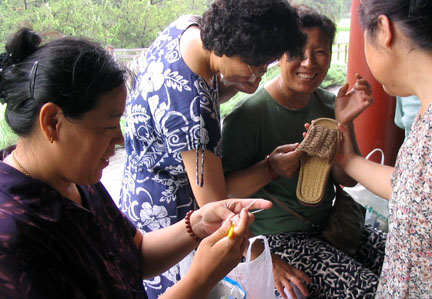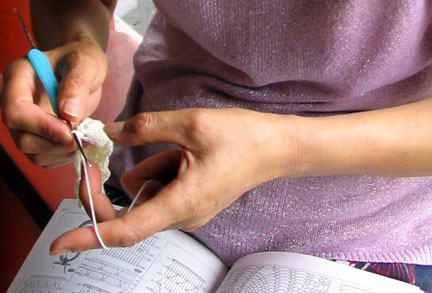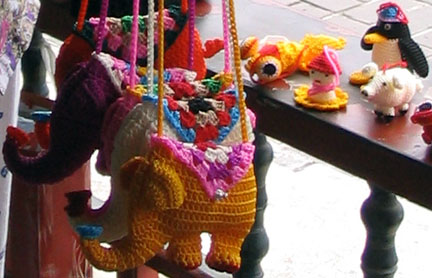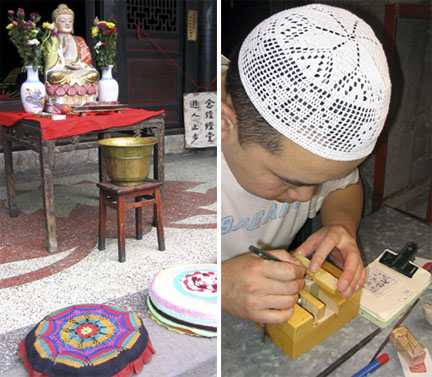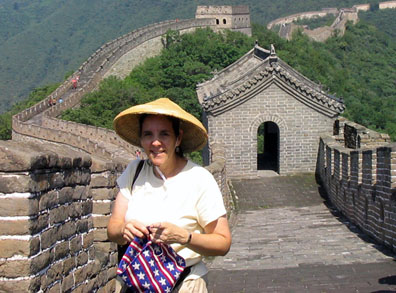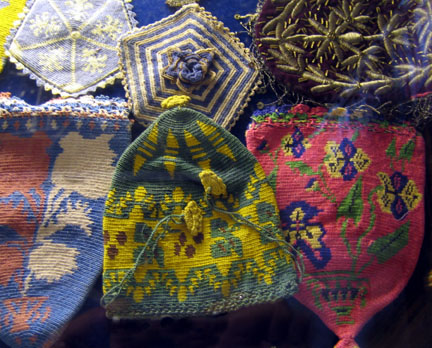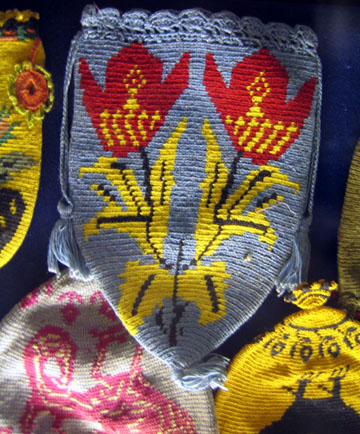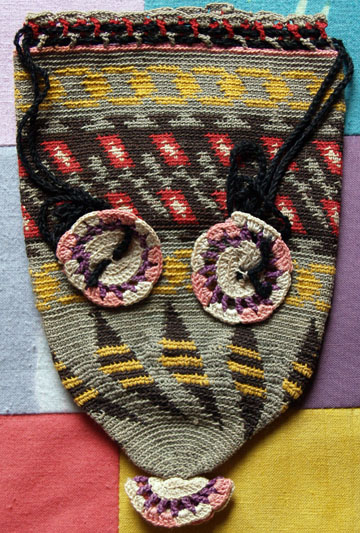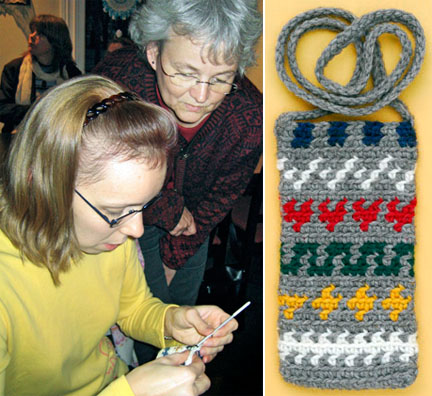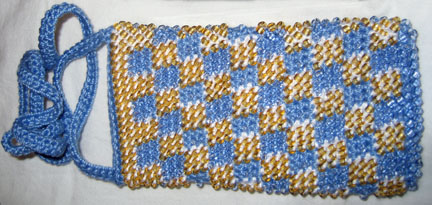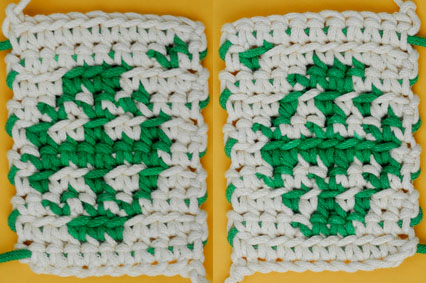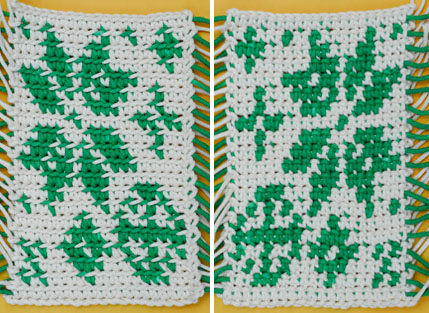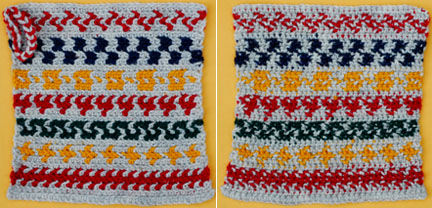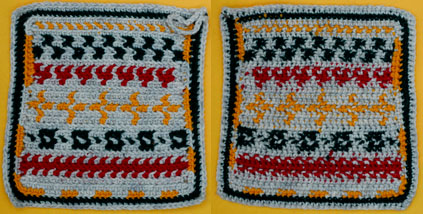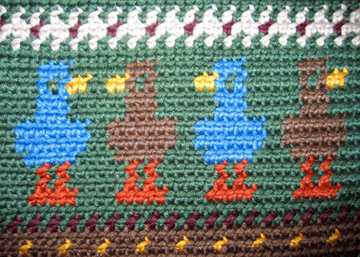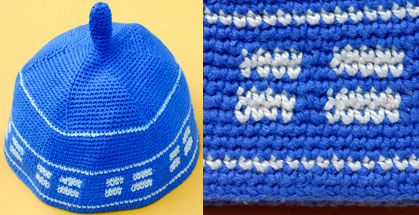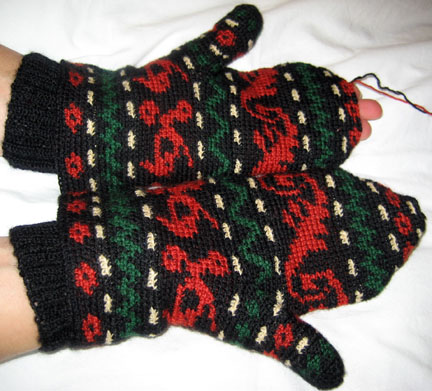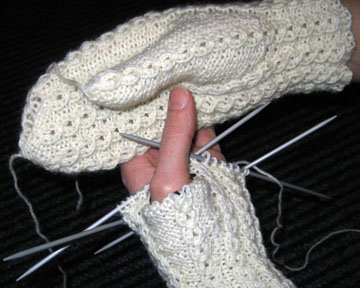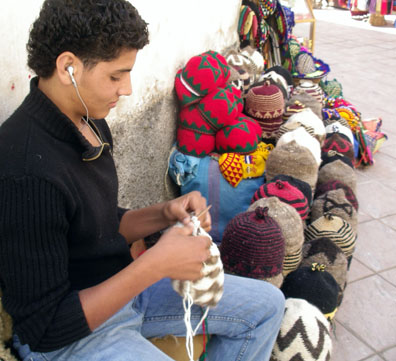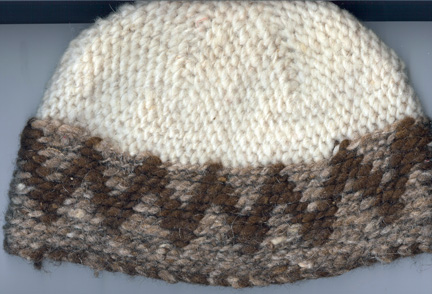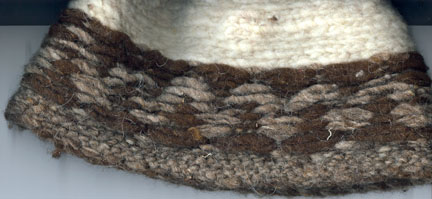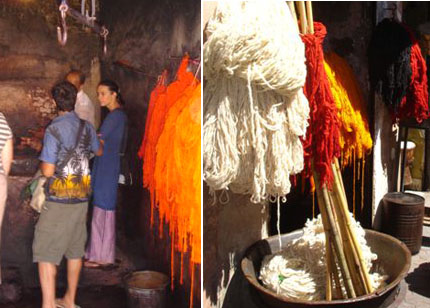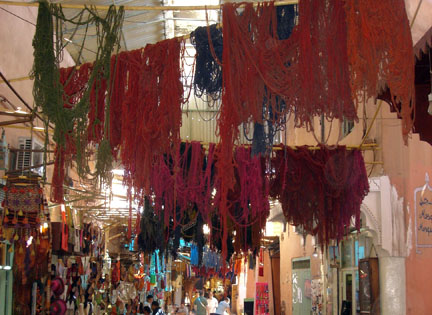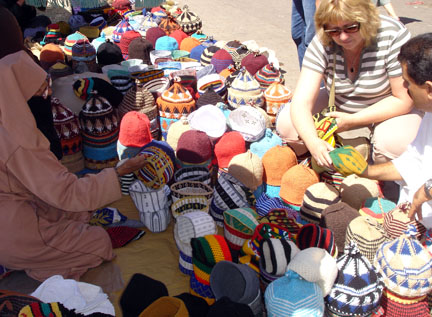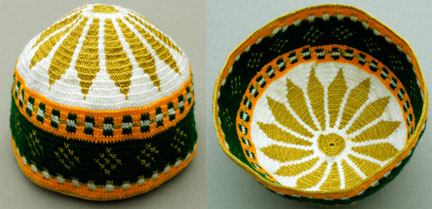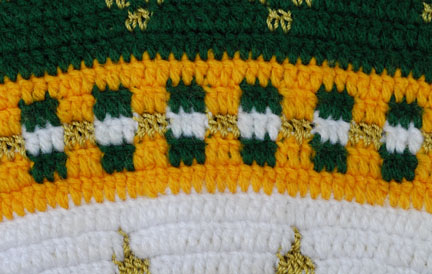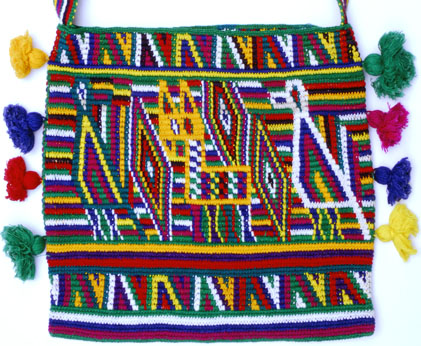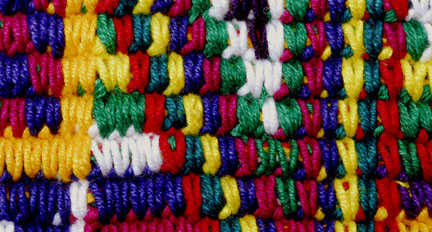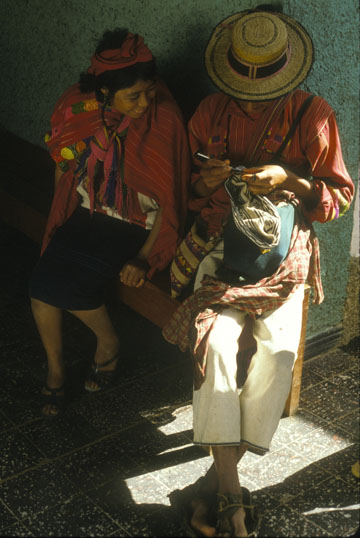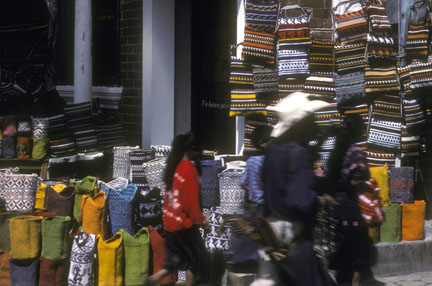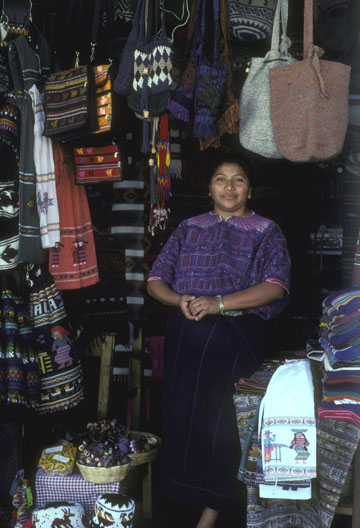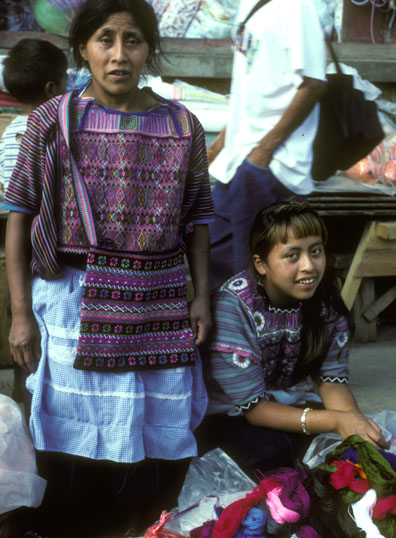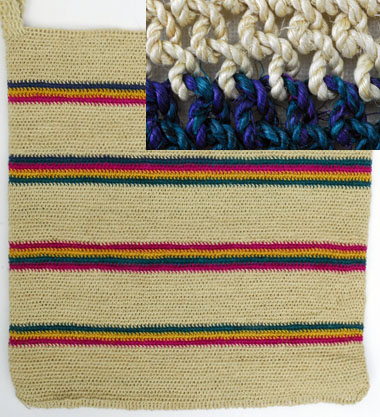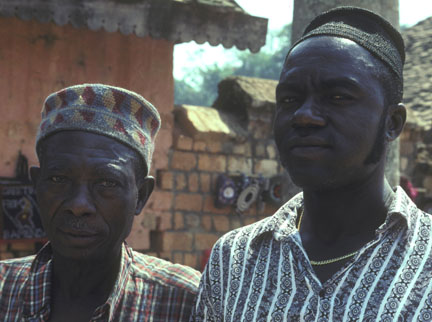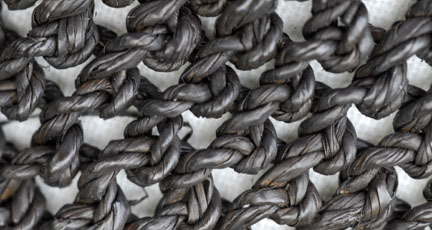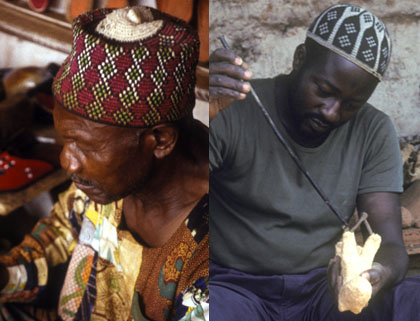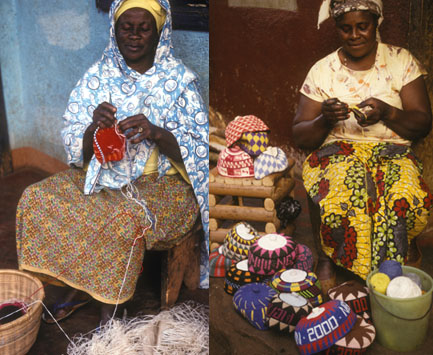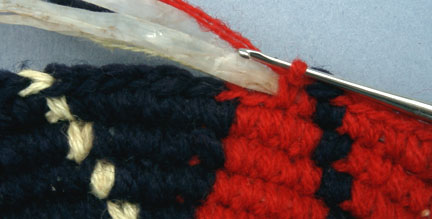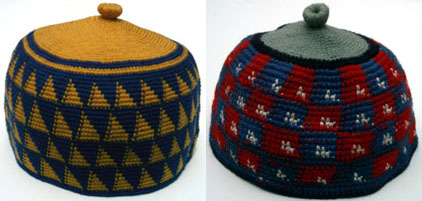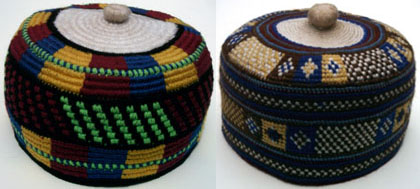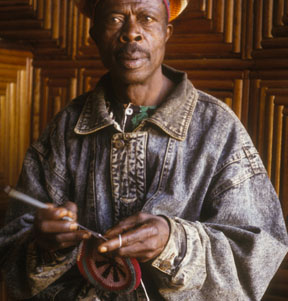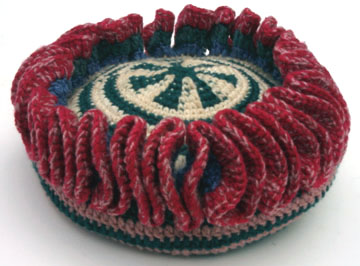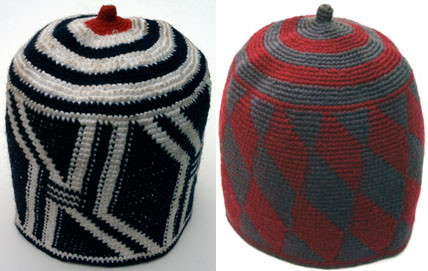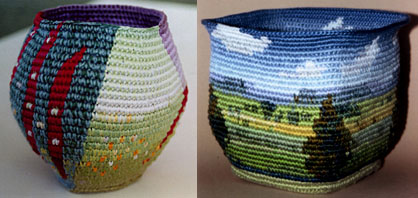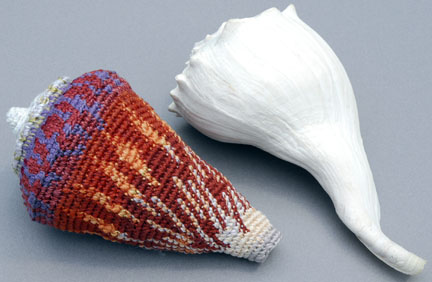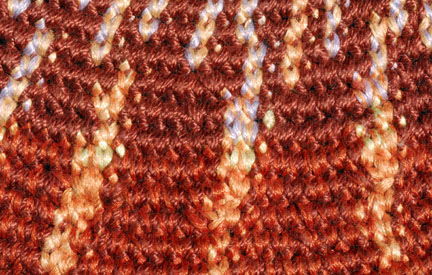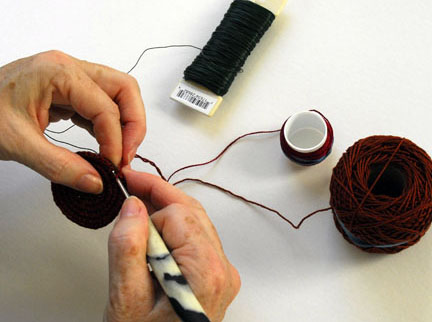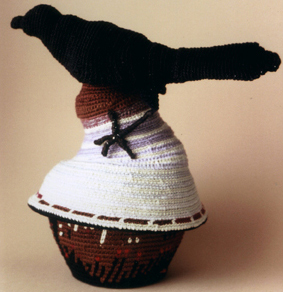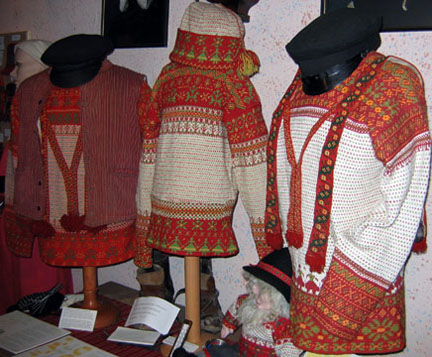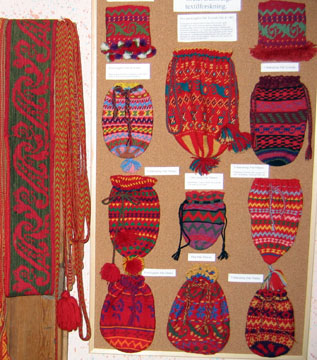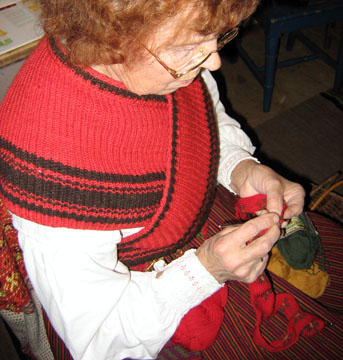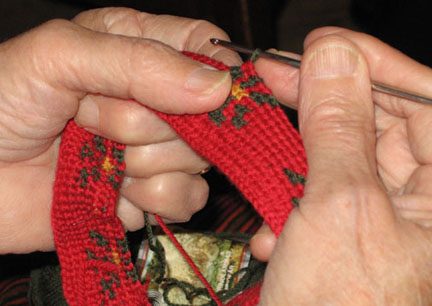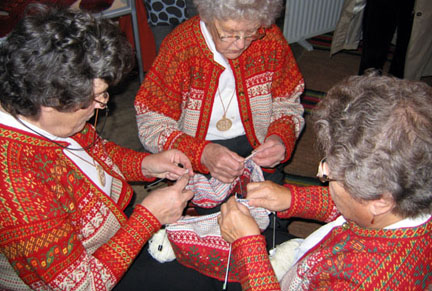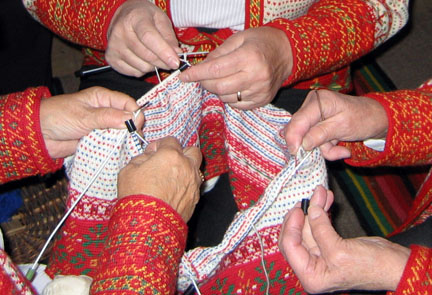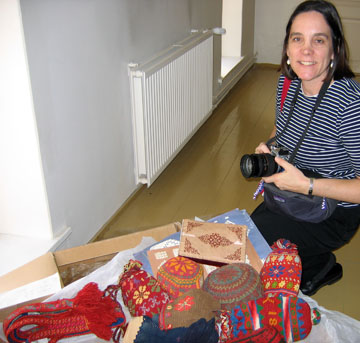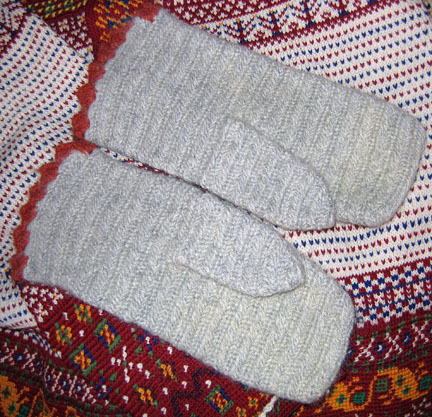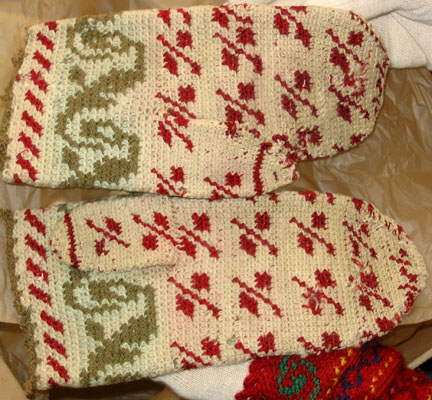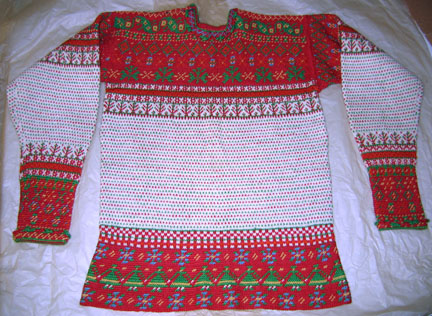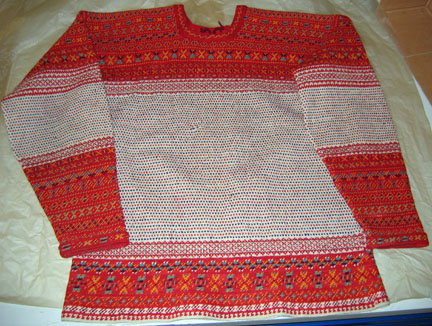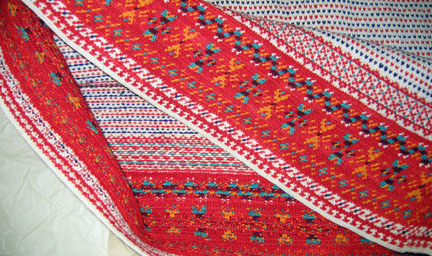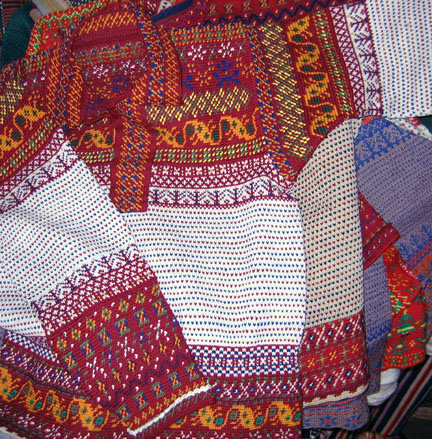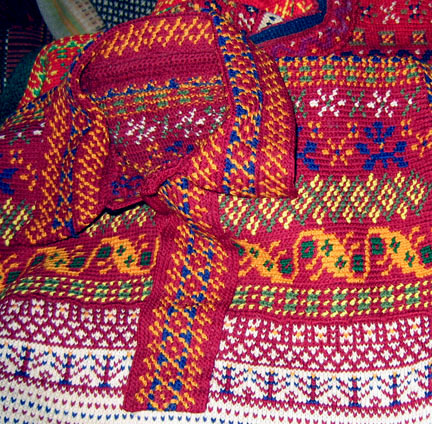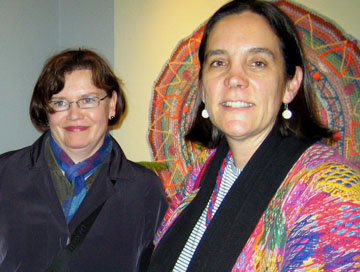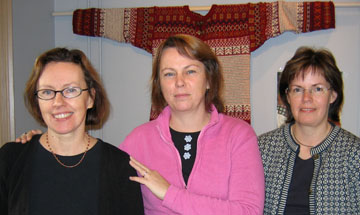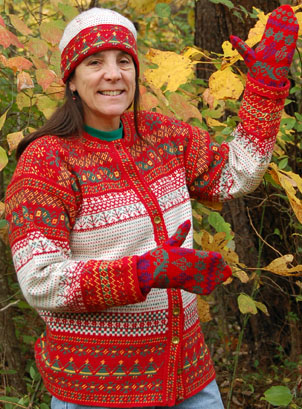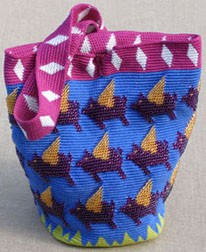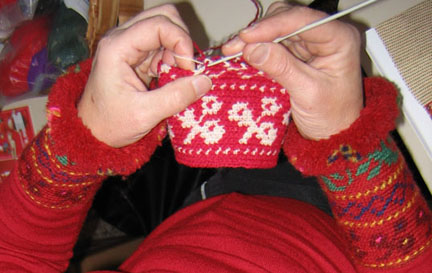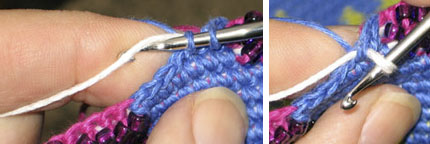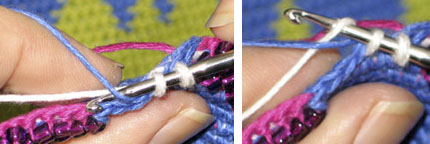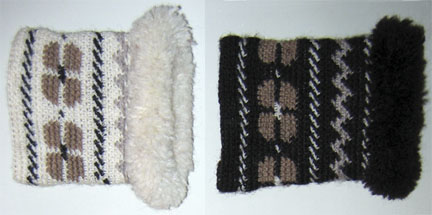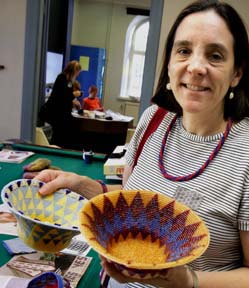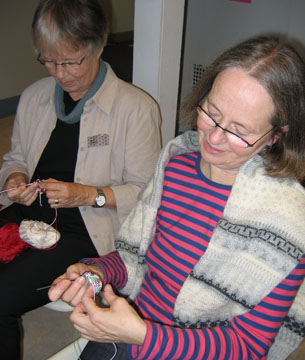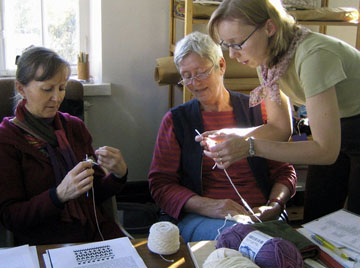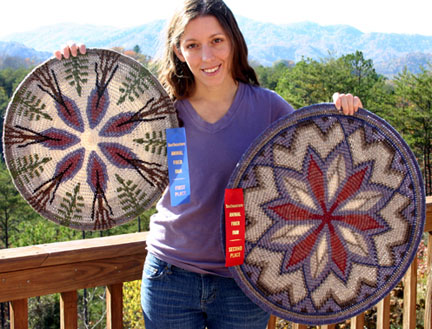
Stacey Glasgow, aka Sriyana, with her prize-winning Woodland and Star Mandalas.
When I asked Stacey if I could blog about her work, she not only agreed, but helped by emailing me the following:
“Originally from Michigan, I grew up on the northern edge of Detroit. As a young girl I was drawn to old-timey handcrafts, and all forms of art. My grandmother knew how to crochet, and at my request, taught me the basics when I was about eight years old. Soon afterward, I enthusiastically improvised my first original crochet project –- a simple pastel-striped baby blanket with ruffled edge for my newborn cousin. I continued to crochet on and off over the years, and although I found I was actually good at reading patterns, I often experimented with crocheting my own basic designs.”
“In 2002, after an eleven-month adventure in a small RV, my husband and I settled in the mountains of Western North Carolina. Over the next few years, I did some drawing and painting, something I’ve always loved to do. I began work on a painted mandala. ‘Mandala’ is an ancient Sanskrit term, loosely translated to mean ‘circle.’ The creation of mandalas is an ancient art form, the process of which is said to open communication between the conscious and subconscious mind. Mandalas are used in many religious traditions, and were studied and used by Carl Jung in his work. Jung said, ‘Drawing mandalas expands one’s thinking, exercises integrity, exposes unconscious traits, focuses attention and brings self-knowledge. It calms and relaxes the psyche.’ ”
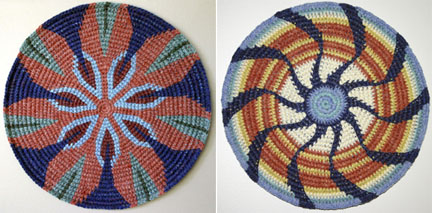
Hawaiian dates to 2006 and Helios to 2007.
“During this time, I attempted some crocheted color-work designs using standard graph paper, but was dissatisfied with the results, due to the many loose ends and floats, and the distortion of the motifs. I began searching the Internet for ‘crocheted tapestries,’ and found Carol Ventura’s books. I was elated, and placed my order for More Tapestry Crochet. As soon as it arrived at my door, I ravenously scanned Carol’s tutorial of the tapestry crochet technique. A light went on, and the floodgates were open! I immediately began designing my own tapestry crochet projects.”
“In 2005, I decided to improvise a tapestry-crocheted mandala. It became the first of many, and in 2007, I devoted much of my time to this newfound passion.”
“Many things give me inspiration for my mandala designs, including the beautiful natural surroundings here in the Blue Ridge Mountains, where I live. Stars, trees, flowers and plants, and other symbols of nature all find their way into my work.”
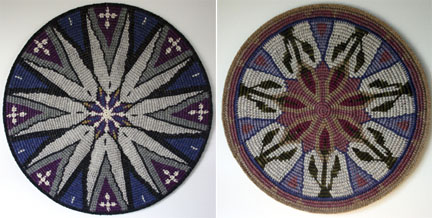
These Knight and Bloom Mandalas date to 2007.
“Music and dance also inspire me. My husband has a talent for writing songs, and is often sitting alongside me, playing and singing as I work. Music is one of the things that brought us together, and continues to nurture the bond between us. I sing harmony with him, and offer suggestions when he’s stuck on a lyric. I also love to dance, and have a great little circle of friends here in Asheville who share that passion. We get together as regularly as possible, often with their new babies in tow, to practice fusion-style bellydance. Gathering with these goddess-women is always inspiring to me. The spiral is a basic form of movement, as inherent in dance as it is in other forms of nature. My dancing and my mandalas, with their basic spiral form, feel closely connected.”
“I also enjoy reading about the folk arts of widely varying, fascinating cultures, such as the Pennsylvania Dutch, Native American, Scandinavian, Middle Eastern and Indonesian traditions. It is inspiring and humbling to find parallels and connections between my work and the work of artists from all over the world, who may have lived hundreds, or even thousands of years ago, all the way up to the present. My little collection of well-loved books on the subject is always growing, and I visit museums whenever I have the opportunity. Although my traveling experience has been relatively limited, I do love to travel, and hope to do more of it in the future. There are so many places I read about that I would like to visit. Ravelry.com has been a windfall, providing the opportunity to virtually ‘meet’ fiber artists from all over the world.”
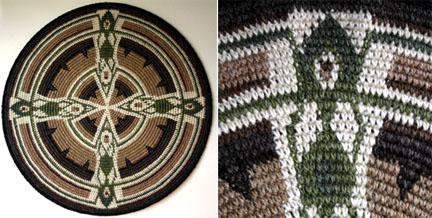
This Earth Mandala dates to 2007.
“My mandalas have, thus far, been crocheted out of wool. Much of the yarn I use is spun from fleeces produced locally by Bovidae Farm in Mars Hill, NC, where I can stop and pet the sheep while visiting their wonderful on-site yarn shop. Their fleeces are sent out to Bartlett Yarns, Inc. in Maine, to be processed into yarn in one of the last ‘spinning mule’ mills in existence in the US, and are then returned to be sold on the farm where they originated.”
“My mandalas are worked in a continuous spiral, often carrying five to eight colors simultaneously. I also end-off colors and add in new ones as I go, so that a completed mandala may end up with as many as seventeen colors and shades, like my Star Flower Mandala Tapestry . . . or more!”
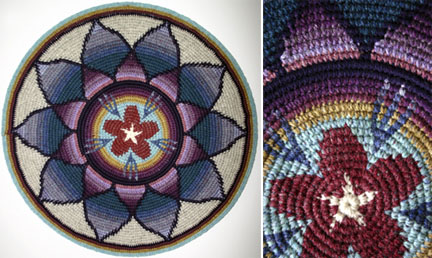
This Star Flower Mandala dates to 2007.
“Once I’ve reached the desired size for a particular mandala, I crochet the last row around a brass-coated steel wire macramé hoop [what a GREAT idea!!!]. This allows me to easily display them, nice and flat, on a wall.”
“Each mandala I create is one-of-a-kind, an improvised design that reveals itself gradually as it develops outward from its center. This unfolding process is meditative, but also exciting. The journey of their creation is therapeutic work, and the final result is always something of a surprise. My mandalas are intended to be enjoyed as wall-hanging tapestries in sacred spaces.”
Stacey explained her technique and added these encouraging words on Ravelry:
“I am not a math person, by nature. So I calculate as little as possible! Making flat circular designs is something you will just get the hang of with some trial and error. I know it can be frustrating, but don’t give up, the ‘AHA!’ moment is just around the corner!”
“I use the increases to branch my designs out, and/or start new motifs right on the increases. Sometimes I do just slip in increases wherever they work, regardless of rules, but I do try to stagger them around from row to row to avoid creating any points on my circle. If you have Carol’s book, More Tapestry Crochet, check out the pattern for the blanket on page 85. I have used the first 19 Rounds of that as an increase guide for getting a flat circle started.”
“Just remember, your design has to accommodate expansion as the circle gets larger . . . so you must either add a new motif when you increase, or make your original motif or background color triangulate out like a slice of pie. If you think of it as a circle made of pie slices, you might get the ‘aha’ moment…or you might just get hungry. Get a slice of pie, (I like coconut cream . . . mmm . . . coconut cream . . . sorry, Homer Simpson moment, there), and keep practicing!”
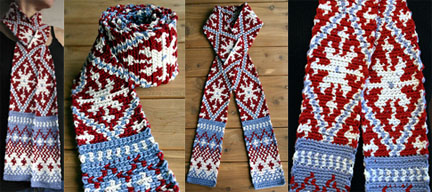
“This was worked using the back-loop tapestry crochet technique. The design is my own, based on traditional Scandinavian-style motifs. I incorporated a pass-through slot into the scarf, at my sister’s request.”
Stacey also designs tapestry crochet clothing and accessories – but mandalas are her passion. I’m really looking forward to seeing her new work – which I find calming and exhilarating at the same time!
